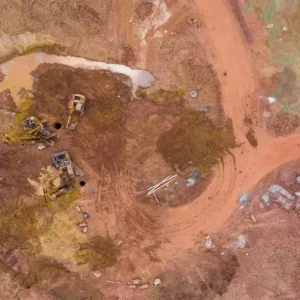
The speed of lithium extraction from brine deposits could be significantly increased using a technique recently developed by an international team of scientists.
The new filtration technique mimics the capabilities of living cells and has been tailored specifically to filter lithium ions in an “ultra-fast, one-directional and highly-selective manner”.
According to the researchers, the technology — which remains in an early stage — could one day reduce lithium-from-brine extraction times from several months to just a matter of hours.
They have said they are hopeful the technique will be able to provide “a clear roadmap for resource recovery”, as well as for other uses such as “low-energy water purification” — noting the particular benefit of greater lithium availability to “enabling electric vehicles and grid integration of renewable energy sources”.
It is the latest in a series of lithium extraction technology breakthroughs, as researchers around the world seek ways to make access to this increasingly-important mineral easier and more cost-effective.
New technique could reduce lithium-from-brine extraction from months to hours
Representatives of Australia’s Monash University, Commonwealth Scientific and Industrial Research Organisation (CSIRO), the University of Melbourne and the University of Texas at Austin collaborated on the project.
US-based clean energy firm Energy-X, which has a particular focus on new lithium technologies, has executed an exclusive licence to commercialise the technology.
Professor of chemical engineering at Monash University Huanting Wang, who co-led the project, said: “Based on this new research, we could one day have the capability to produce simple filters that will take hours to extract lithium from brine, rather than several months to years.
“Preliminary studies have shown that this technology has a lithium recovery rate of approximately 90% — a substantial improvement on a 30% recovery rate achieved through the current solar evaporation process.”
The new project involves mimicking the precise “ion selection” filtering capabilities of a living cell using synthetic “metal organic framework” (MOF) channels in a way that is fine-tuned for compatibility with lithium ions.
EnergyX CEO Teague Egan added: “This breakthrough invention will literally change the way lithium is produced and how we power our future.”
Lithium is critical to the energy transition
Lithium has emerged as a critical resource in the clean energy transition, used in the manufacture of batteries for electronic vehicles as well as other technologies driving the low-carbon switch.
The soft white metal is naturally deposited either in liquid brine reservoirs or as an ore from hard rock, primarily spodumene — although the vast majority of global reserves are found in brine.
Existing brine extraction methods often make use of “salt flats” where solar evaporation ponds are created to separate the lithium minerals from the brine.
These evaporation processes can be very time-consuming, however, often taking several months or even years to achieve the separation.
Many of these “salars” are clustered around the Andes mountain range in South America – an area known as the “lithium triangle” which spans Bolivia, Argentina and Chile, and holds roughly half of the world’s known lithium reserves.






